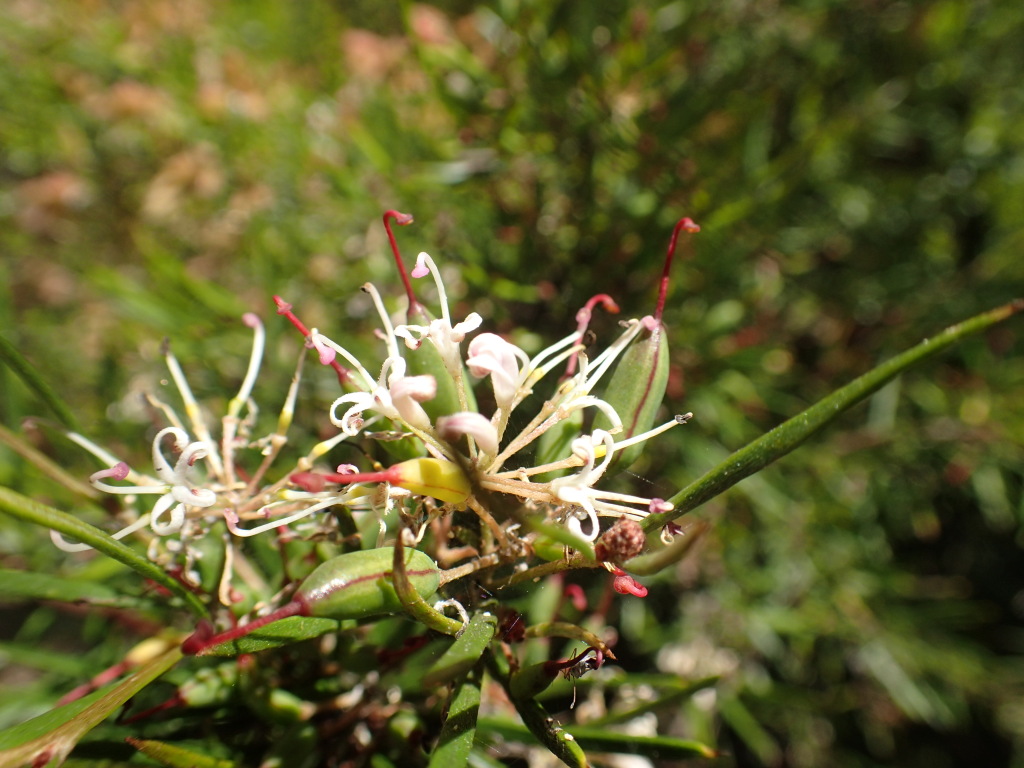Grevillea neurophylla
Gand.Spreading to erect shrub 1–2.6 m high, sometimes root-suckering. Leaves entire, narrowly elliptic to linear, sometimes curved or wavy, 2.5–5.5(–8) cm long, 0.8–2 mm wide, crowded or not, spreading to strongly ascending; upper surface of leaf with submarginal veins slightly granular; margin angularly refracted, usually enclosing the lower surface either side of midvein. Conflorescences c. 1 cm long, sessile or shortly pedunculate (peduncles to 6mm long), regular, umbel-like; perianth white to pale pink, outer surface with appressed hairs, inner surface with a sparingly developed beard opposite the ovary; pistil 6–7.5 mm long, ovary stipitate, glabrous, style white to pink, with minute hairs or papillae just below apex, pollen presenter oblique. Fruits glabrous. Flowers Sep.–Feb.
GGr, NIS, EGL, EGU, HNF, MonT, VAlp. Occurs in south-eastern NSW, and eastern Vic. Grows in well-drained sandy (often granitic) soils, often near watercourses.
Grevillea neurophylla is very similar to G. gariwerdensis, but has the leaves 1–3(–5) cm long, and leaf margins shortly refracted, usually with some subsericeous lamina exposed on either side of the abaxial midvein. G. neurophylla can also be confused with G. patulifolia, but the former has often longer and narrower, pliable, non-pungent, more strongly ascending leaves, shorter pedicels, and a usually shorter pistil. G. alpivaga is also similar, but usually has shorter leaves to 3 cm long, which are crowded in clusters on lateral branchlets, and more rigid, with the lower surface on either side of the midvein usually partly exposed. Can also be confused with G. patulifolia (see notes for that species).
2 subspecies are recognised, both present in Victoria.
Makinson, R.O. (1996). Grevillea. In: Walsh, N.G.; Entwisle, T.J., Flora of Victoria Vol. 3, Dicotyledons Winteraceae to Myrtaceae, pp. 845–870. Inkata Press, Melbourne.
 Spinning
SpinningMakinson, R.O. (2000). Grevillea. In: Australian Biological Resources Study, Flora of Australia vol. 17A, Proteaceae 2, ~Grevillea~, pp. 1–524. CSIRO Publishing.


